Iowa State Fair History
Midwest Construction Celebrating 32 years as an Iowa State Fair Exhibitor in the Varied Industry Building! Check out the before and after photos of the booth build, Iowa State Fair History and the Midwest Construction History at the State Fair.
Before, July 31st, 2017
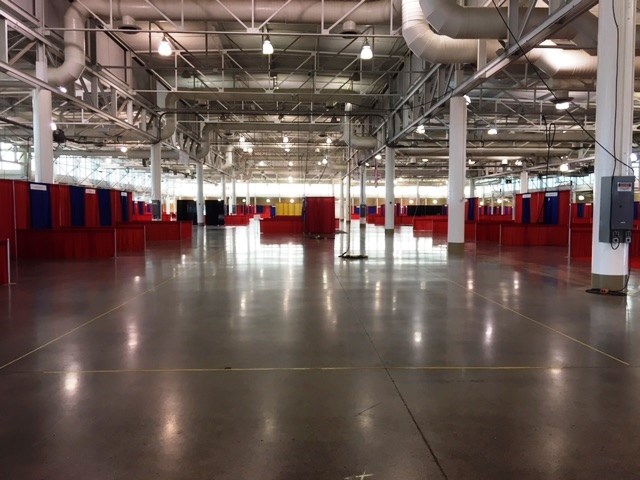
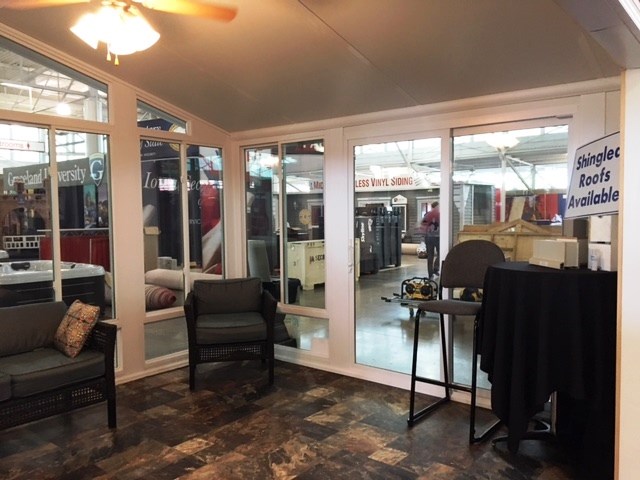
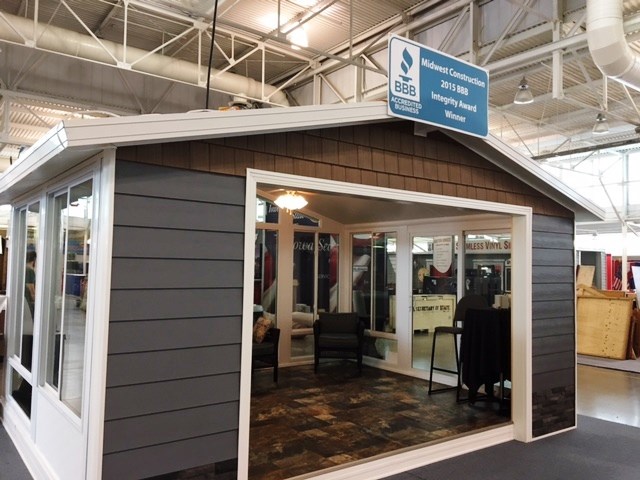
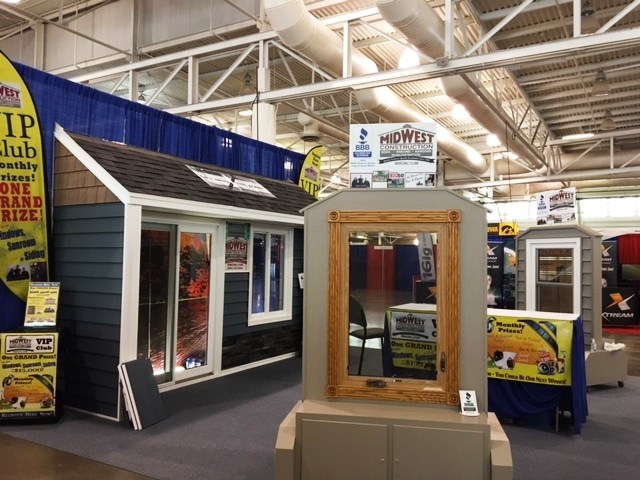
Paul Despenas:
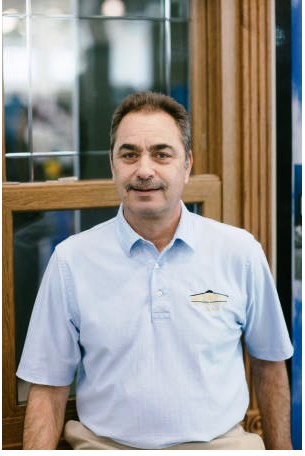
So this year I googled the Iowa State Fair History (Copy below) read up and took a long walk one day to see it all. All I can say is WOW!!! Plenty to do and see for everyone!
The Iowa State Fair was held in a different community every two years after it was first established. The first fair was held in Fairfield in 1854. The other towns that hosted the fair included Muscatine, Oskaloosa, Iowa City, Dubuque, Burlington, Clinton, Keokuk and Cedar Rapids.
The state fair moved to Des Moines permanently in 1878. The fairgrounds were initially located on the west side of the city between 38th Street on the east, 42nd Street on the west, Center Street on the north and Grand Avenue on the south.
In 1886 the fairgrounds were moved to the east side of town on University Avenue. The property had previously been the Calvin Thornton Farmstead.
The original house and barn are still on the fairground’s property. Other structures from the farm survived into the late 1940s when they were torn down.
In 1886 the Iowa Legislature and the city of Des Moines appropriated funds and the first buildings were built. They were frame buildings that used boards and battens as exterior wall covering. They were mostly single-story structures that were built quickly and under a tight budget. Because they were poorly built they were constantly in need of repair. However, the buildings lasted into the early 20th century when they began to be replaced or expanded. Pioneer Hall remains from this period. The streets within the fairgrounds followed the same basic pattern as they do today, although they were unpaved and without curbing or gutters in the early years. A street lighting system was put in about 1890 when oil lamps were added. The following year 500 electric lights were installed on the grounds.
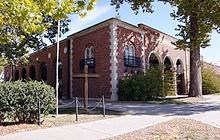
Fish & Game Pavilion
The new buildings built in the early 20th-century were steel frame structures covered in red brick. They included a new Livestock Pavilion that was built in 1902, Agriculture Building (1904), Administration Building (1908). A new race track and grandstand were built in 1909 and the Varied Industries Building was built in 1911. Some of the frame buildings from 1886 were moved to a different location and continued to be used. A sewer system was added at this time. The streets remained unpaved, but curbing had been added. They were also oiled to control the dust and cinders were spread to improve their durability. A park triangle had been established at the intersection of Grand and Rock Island Avenues by 1920.
By 1942 when the United States Army leased the fairgrounds for a storage depot for the Air Corps there were only minimal changes to the fairgrounds. The livestock buildings had been enlarged. Running water had been installed, bath and shower houses had been built at the campgrounds and restrooms were placed throughout the fairgrounds. Street pavement began in the 1930s and both brick and concrete sidewalks were added. Storm sewers were a Works Progress Administration project in 1936.
Since the end of World War II most of the buildings have been pole barn structures, although the exteriors, for the most part, are still covered in brick. Older buildings from around Iowa have been added to the fairgrounds in the 1960s and 1970s and are known as Heritage Village. Some of the buildings in the village are also those built on the fairgrounds in 1886.
Fairgrounds today
The Grand Concourse
The fairgrounds are composed of 435 acres, of which 275 acres are devoted to the fair proper and about 160 acres are campgrounds.
The grounds are organized with activities grouped into departmental areas. The livestock departments such as cattle, horses, sheep and poultry are on the south near where the railroad tracks are located. The plant departments, which includes cash crops, fruits and floral are located in the center.
The amusement area with the midway and race track/grandstand is in the northeast section of the fairgrounds. The machinery department is in the west and the campgrounds are in the east. There is also a street plan based on a T-shaped road arrangement.
The east/west artery is Grand Avenue, also called the Grand Concourse, and the north/south artery is Rock Island Avenue. The eastern portion of the fairgrounds is hilly while the western portion is flat.

In addition to the annual state fair the fairgrounds also hosts auto shows, livestock exhibitions, flea markets, antique shows, concerts, trade shows and other events.

Subscribe to Midwest Construction's Blog




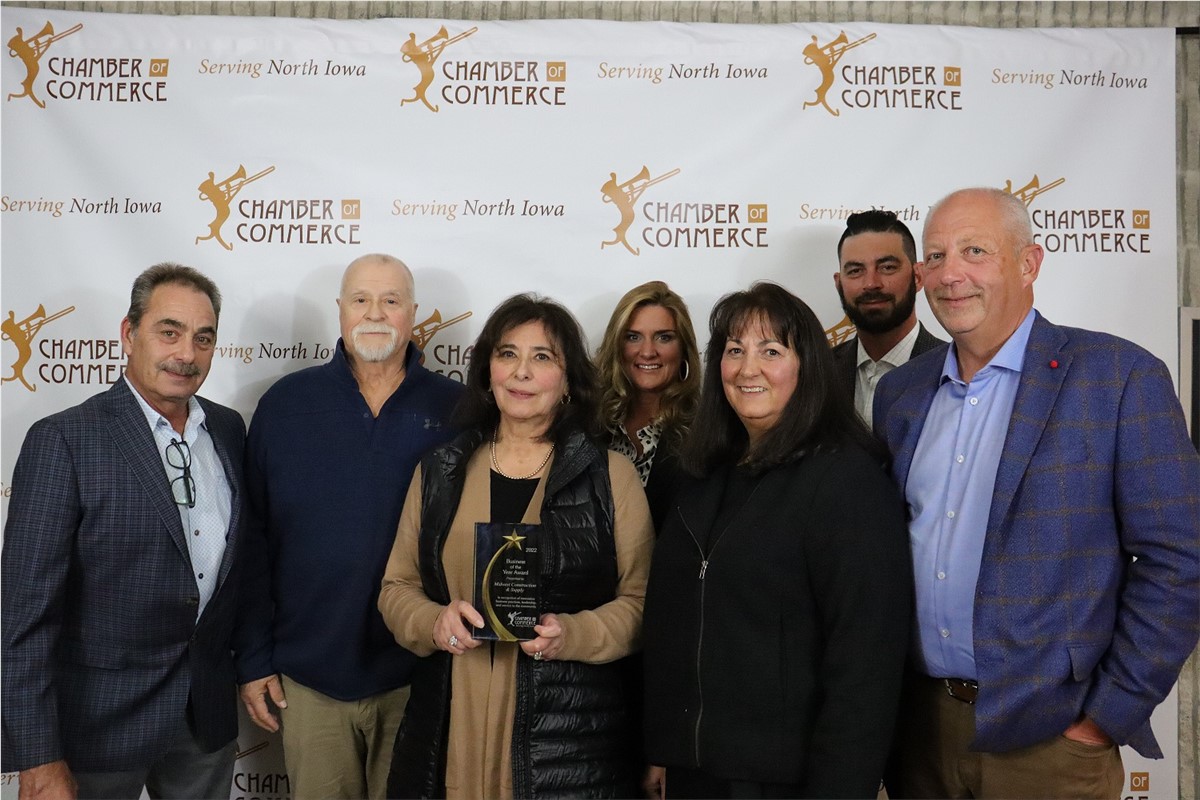

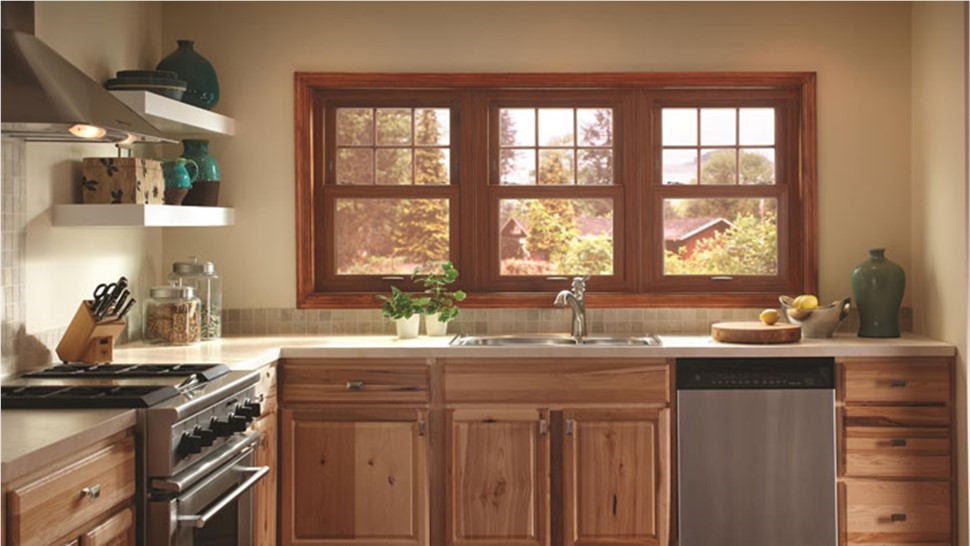
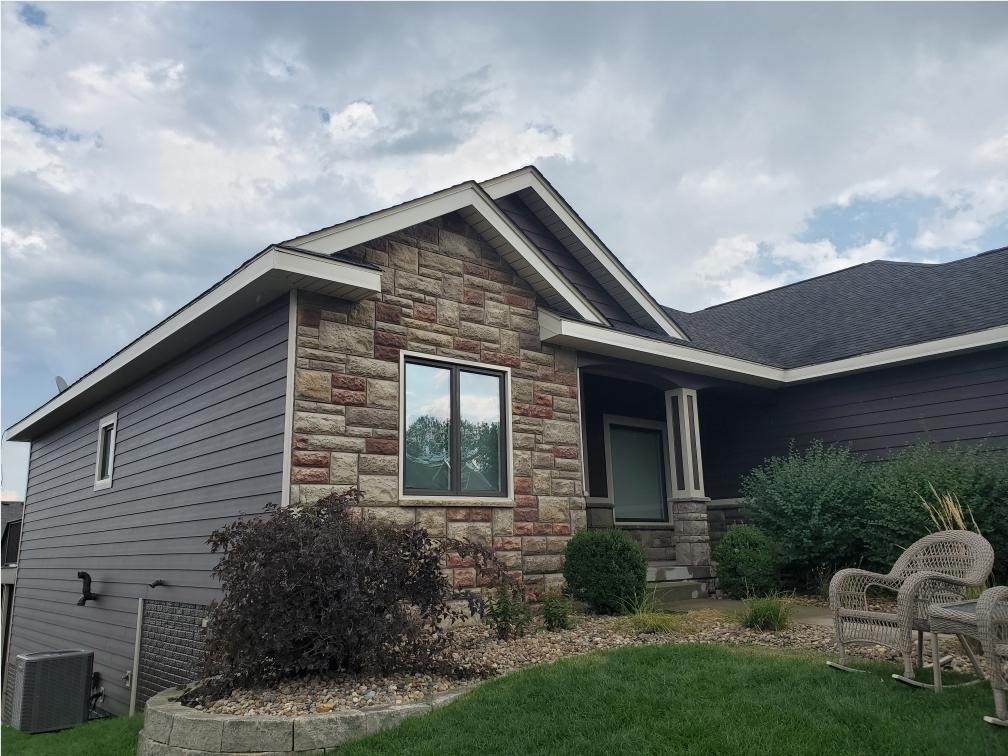
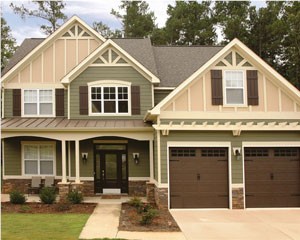

Comments